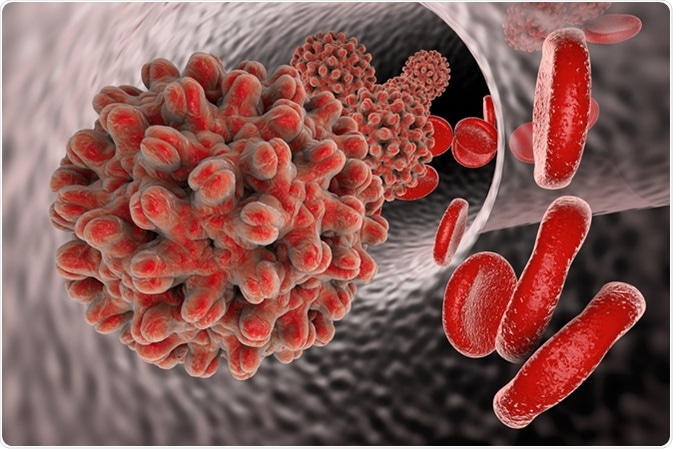Hepatitis B virus (HBV) is a common cause for liver disease and accounts for approximately one million deaths worldwide every year. This virus is of the Hepadnaviridae family and its genome comprises of a partially double-stranded relaxed circular DNA (rcDNA).
The genome of HBV exists in two forms, i.e., the circular covalently closed DNA (cccDNA) and rcDNA. In early HBV infection, the genomic rcDNA is converted to cccDNA in the newly infected cell.

Relation Between HBV Infection and cccDNA
The molecular mechanism of HBV infection and its persistence has not been understood fully. This mechanism appears to be multifactorial involving many co-activators, co-repressors, transcription factors, and chromatin modifying enzymes.
In HBV infection, the cccDNA interacts with histones and non-histones and cccDNA transcription is regulated by the histone acetylation. This post-translational histone modification manifests as low viremia in patients infected by HBV.
Diagnostic Methods
With research proving that HBV is characterized by the presence of the viral genome, cccDNA, in infected hepatocytes, any breakthrough in achieving complete cure of HBV will require thorough understanding of the biogenesis, regulation, as well as stability of cccDNA.
Diagnostic methods such as the Southern blot and reverse transcription-polymerase reaction are very lengthy and have a very low precision. These methods are also labor intensive.
Of late, a number of potential genome editing tools have been developed which can cleave specific sequences of DNA.
Many studies have used these tools to excise the viral cccDNA. Examples of such tools are the clustered regularly interspaced short palindromic repeats/Cas9 system (CRISPR/Cas9), zinc finger nucleases (ZFNs), and transcription activator-like effector nucleases (TALENs).
Zinc finger nucleases (ZFNs) and Transcription activator-like effector nucleases (TALENs)
These chimeric nucleases are engineered to facilitate targeted genome editing. They work by creating double stranded breaks in the DNA at the specified location. These double-strand breaks caused by ZNFs or TALENs stimulate the cell's natural DNA-repair processes.
By generating targeted genomic edits, parental cell lines with targeted gene deletion, modifications, or integration can be produced.
Clustered regularly interspaced short palindromic repeats/Cas9 system (CRISPR/Cas9)
Out of the three types of CRISPR mechanisms identified, type II has been used extensively for research. The type II CRISPR mechanism consists of only one Cas protein that is the Cas9 protein.
The Cas9 protein forms a complex with the single guide RNA and brings about site-specific double-stranded break via the RNA-DNA complementary base pairing.
Therapies for HBV Infection
The available antiviral therapies, such as nucleoside analogs, do not cure HBV infection and require lifelong administration to contain the infection. Sometimes HBV develops resistance to these drugs upon long-term administration.
The presence of this recalcitrant cccDNA leads to relapse of viremia even after therapy. In addition, the level of the HBV cccDNA in human liver cells is extremely low, thereby requiring highly sensitive methods of measurement.
The use of gene therapy to stop the replication of HBV has been gaining considerable momentum. With different genome editing tools, the cccDNA can be disabled by targeted mutagenesis. For example, RNA-guided nucleases (RGNs) comprise of a CRISPR RNA (crRNA) and trans-activating crRNA (tracrRNA). The crRNA has a sequence that is complementary to a pre-defined DNA target sequence thereby leading to cleavage of the target DNA.
Epigenetic gene slicing is another method that is used to treat HBV infection. This method involves chemical alteration of DNA without any change to the genetic code. Examples of epigenetic modifications are cccDNA methylation and cccDNA minichromosome acetylation. The major epigenetic modifiers of HBV DNA are histone acetyl transferases, and lysine/DNA/arginine methyltranferases. Studies have demonstrated that histone deacetylases inhibitors suppress cccDNA in duck HBV.
Immunomodulators such as interferon alpha (IFN-α) are used for functional cure of HBV infection. However, this therapy has a very low efficacy rate and has side effects. Berrando et al demonstrated that modified IFN-α improves their safety profile and helps in maintaining antiviral efficacy in HBV transgenic mice.
Conclusion
A complete cure for chronic HBV infections will require extensive research to develop innovative therapeutic approaches that can act effectively inhibit the persistent episomal cccDNA. Irrespective of the challenges of gene-based therapy for HBV infection, this field is rapidly gaining momentum and making good strides to provide therapeutic solutions that are highly effective with minimal toxicity.
Sources
- Gao W and Hu J. Formation of Hepatitis B Virus Covalently Closed Circular DNA: Removal of Genome-Linked Protein. Journal of Virology. 2007 Jun: 81(12):6164-74. http://jvi.asm.org/content/81/12/6164.full
- Rybicka M, Woziwodzka A, Romanowski T et al. Differences in sequences between HBV-relaxed circular DNA and covalently closed circular DNA. Emerg Microbes Infect. 2017;6(6):e55. https://www.ncbi.nlm.nih.gov/pubmed/28634352
- Bloom K, Maepa MB, Ely A et al. Gene Therapy for Chronic HBV-Can We Eliminate cccDNA? Genes (Basel). 2018 Apr;9(4).piiE207. https://www.ncbi.nlm.nih.gov/pmc/articles/PMC5924549/
- Yang HC and Chen PJ. The potential and challenges of CRISPR-Cas in eradication hepatitis B virus covalently closed circular DNA. Virus Research. 2018 Jan;244:304-10. https://www.sciencedirect.com/science/article/pii/S0168170217302794
- Ohno M, Otsuka M, Kishikawa T et al. Novel therapeutic approaches for hepatitis B virus covalently closed circular DNA. World J Gastroenterol. 2015 Jun;21(23):7084-8.. https://www.ncbi.nlm.nih.gov/pmc/articles/PMC4476870/
- Allweiss L. and Dandri M. The Role of cccDNA in HBV Maintenance. Viruses;2017;9(6):156. https://www.ncbi.nlm.nih.gov/pmc/articles/PMC5490831/
- www.sigmaaldrich.com/…/what-is-zfn.html
- www.neb.com/…/crispr-cas9-and-targeted-genome-editing-a-new-era-in-molecular-biology
Further Reading
- All Hepatitis B Content
- What is Hepatitis B?
- Hepatitis B Mechanisms
- Hepatitis B Diagnosis
- Hepatitis B Prevention
Last Updated: Aug 23, 2018

Written by
Deepthi Sathyajith
Deepthi spent much of her early career working as a post-doctoral researcher in the field of pharmacognosy. She began her career in pharmacovigilance, where she worked on many global projects with some of the world's leading pharmaceutical companies. Deepthi is now a consultant scientific writer for a large pharmaceutical company and occasionally works with News-Medical, applying her expertise to a wide range of life sciences subjects.
Source: Read Full Article
